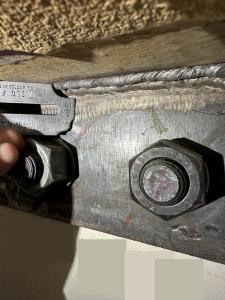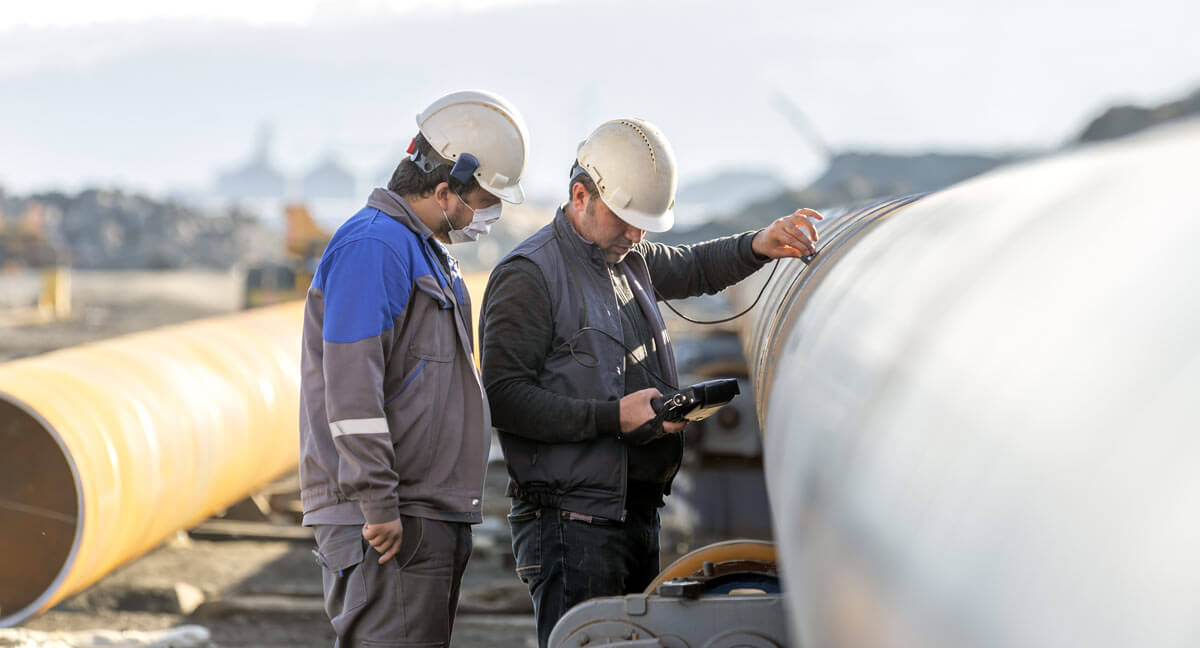A Comprehensive Guide to Welding Inspection: Understanding Requirements, Techniques, and Ideal Practices for High Quality Assurance
Welding inspection plays an essential function in guaranteeing the structural stability and security of bonded parts, necessitating a complete understanding of market requirements such as those established by AWS and ASME. Various evaluation techniques, including aesthetic and ultrasonic screening, are utilized to detect possible issues that might compromise high quality. Implementing finest techniques can significantly boost functional reliability and foster depend on amongst clients. As we explore these essential elements, it comes to be apparent that the effects of welding evaluation prolong far beyond compliance, welcoming a more detailed examination of how these processes form market criteria and practices.
Value of Welding Examination
Welding evaluation plays a vital role in making certain the integrity and safety of bonded frameworks. It is a necessary procedure that validates that welds satisfy predefined specs, which is vital in numerous sectors, consisting of building, automotive, and aerospace. By carrying out comprehensive evaluations, prospective defects such as cracks, insufficient fusion, and porosity can be recognized early, stopping tragic failures that can lead to crashes or costly fixings.
The relevance of welding evaluation expands past plain compliance with guidelines; it likewise promotes depend on with stakeholders. Clients and regulatory bodies anticipate assurance that the structures they rely upon are developed to stand up to functional stress and anxieties. Effective welding inspection practices contribute to lasting toughness and efficiency of the frameworks, ultimately leading to minimized maintenance expenses.
Furthermore, welding inspection promotes a culture of top quality within companies, urging adherence to ideal techniques and continuous improvement. By incorporating inspection procedures right into the welding process, business can improve their track record and establish themselves as leaders in quality control. To conclude, the relevance of welding assessment exists in its capability to guard lives, make sure structural dependability, and support sector criteria, making it a vital facet of welding procedures.
Key Industry Criteria
Guaranteeing conformity with crucial sector standards is essential for maintaining the high quality and safety of welded frameworks. Different companies establish these criteria to advertise ideal practices in welding and evaluation - Welding Inspection Gilbert Arizona. Among one of the most acknowledged are the American Welding Culture (AWS) and the American Culture of Mechanical Engineers (ASME), which give detailed guidelines and specifications for welding processes and inspection standards
AWS criteria, such as AWS D1.1 for architectural welding, synopsis requirements for materials, style, and testing to ensure the stability of welds. ASME codes, consisting of ASME Area IX, govern the qualification of welders and welding procedures, guaranteeing regular quality in commercial applications. Globally, the ISO 3834 basic stresses high quality requirements for fusion welding, offering a framework for companies to demonstrate compliance with international finest techniques.
Compliance with these standards not only enhances the reliability of bonded structures however additionally mitigates threats associated with architectural failings. Adherence to industry criteria is often a prerequisite for regulatory authorizations and can significantly influence task specs. Eventually, understanding and carrying out these essential standards are vital for reliable welding inspection and high quality guarantee.
Assessment Techniques Overview
Reliable welding evaluation depends on a variety of methods developed to evaluate the quality and honesty of welds. These strategies can be broadly categorized into non-destructive and harmful testing (NDT) approaches. Non-destructive screening techniques, which are widely favored in the sector, allow for the evaluation of welds without endangering the integrity of the material.

Among the most commonly used NDT strategies are aesthetic assessment, ultrasonic screening, radiographic screening, and magnetic particle screening. Aesthetic examination is typically the initial check here step in the evaluation process, making it possible for inspectors to recognize surface imperfections and evaluate weld bead accounts.
Each strategy has its own benefits and restrictions, making it necessary for assessors to choose the most ideal technique based upon the specific requirements of the task, the materials included, and the criticality of the welds being evaluated. This mindful option makes certain thorough evaluations and maintains security and top quality requirements in welding operations.
Typical Problems and Their Effects
An extensive understanding of common problems in welds is critical for preserving structural honesty and safety in bonded constructions. Welding defects can substantially endanger the mechanical homes of the joint, leading to failures that can threaten both workers and tools.
Usual issues consist of porosity, which manifests as little gas pockets caught in the weld steel, weakening the overall framework. Cracking is an additional prevalent concern, usually click for info resulting from rapid cooling or improper joint design, leading to stress and anxiety focus that can cause tragic failures. Incomplete combination occurs when the weld metal fails to properly bond with the base material, creating powerlessness that might lead to splitting up under lots.
Other remarkable issues consist of damaging, where the weld grain wears down the base steel, and slag additions, which can hinder the weld's strength. Each of these problems has certain ramifications; for circumstances, porosity can reduce ductility, while cracking straight affects tensile strength. Recognizing and comprehending these defects throughout examination is essential for ensuring and executing restorative procedures conformity with industry requirements, eventually securing the structural stability of bonded settings up.
Finest Practices for Quality Control
Applying best practices for high quality assurance in welding processes is crucial for achieving optimum outcomes and decreasing flaws. One crucial method is the establishment of clear welding procedures that stick to sector requirements and specs. These procedures must include detailed directions pertaining to material option, joint preparation, and welding techniques to make certain uniformity and top quality.
Regular training and accreditation of welding workers are additionally essential. Competent welders who understand the significance of quality control are more probable to generate audio welds. Additionally, executing a robust evaluation program, consisting of both non-destructive and aesthetic screening (NDT), can assist identify problems early in the process, permitting for timely rehabilitative activities.

Finally, promoting a society of top quality within the organization motivates workers to focus on top quality in their job. By adhering to these best practices, organizations can enhance the stability of their welding procedures, eventually causing boosted product quality and decreased expenses related to rework and repair services.

Final Thought
Finally, welding examination plays a vital role in ensuring the honesty and security of welded structures. Adherence to crucial market requirements, such as those established by AWS and ASME, is necessary for efficient quality control. Employing numerous examination strategies enables the recognition of common flaws, consequently alleviating prospective risks. By executing best techniques, companies can improve integrity, lessen maintenance prices, and grow trust fund among clients, inevitably contributing to successful welding procedures - Welding Inspection Gilbert Arizona.
Additionally, welding assessment promotes a society of high quality within organizations, motivating adherence to best techniques and continuous improvement. In final thought, the value of welding assessment exists in its ability to secure lives, ensure architectural reliability, and support sector standards, making it an essential element of welding operations.
Amongst the most recognized are the American Welding Culture (AWS) and the American Culture of Mechanical Engineers (ASME), which give detailed guidelines and requirements for welding processes and assessment standards.
Eventually, understanding and implementing these vital standards are necessary for efficient welding examination and top quality guarantee.
Reliable welding inspection depends on a range of methods made to assess the top quality and honesty of welds.